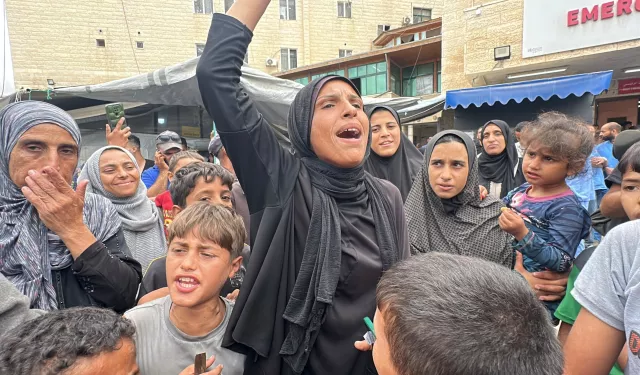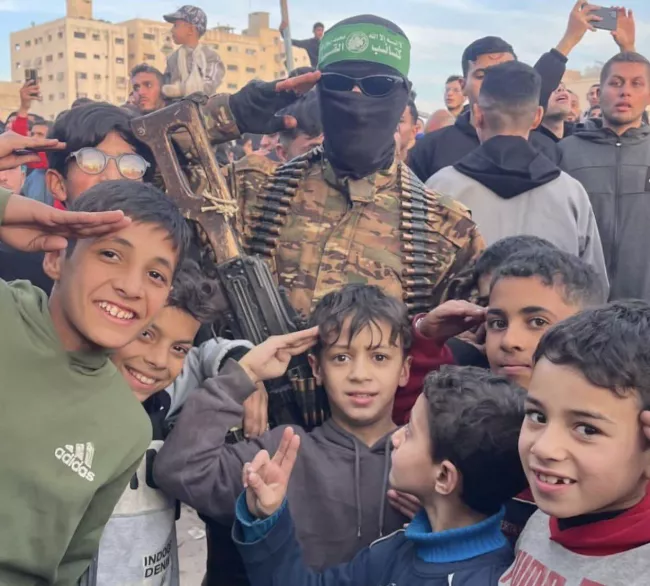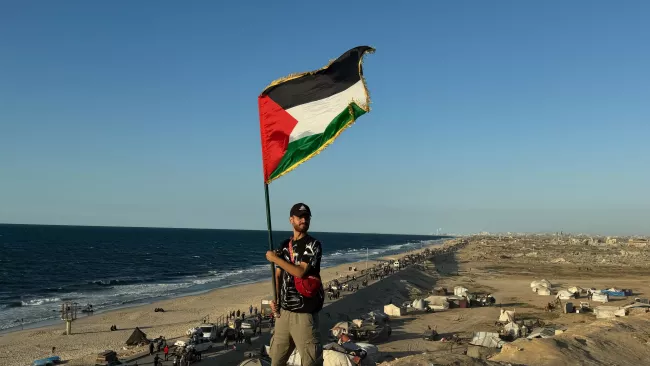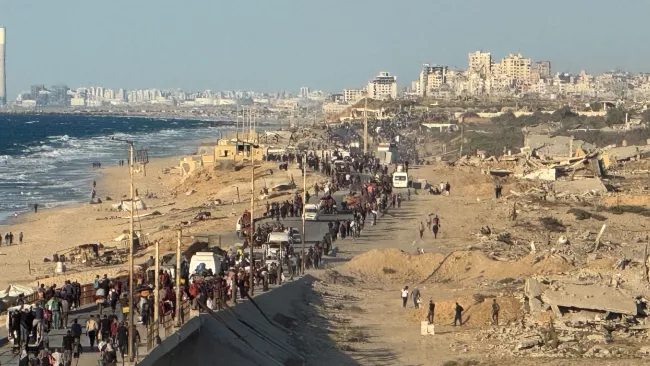
Gaza Journalist Diaries| Questions without answers
The morning after the war
Gazans’ worst habit is heavy celebratory gunfire at weddings and funerals. It’s the way people express their feelings. Yet, this was the first time I wished to hear that hail of bullets—to wake everyone from their numbness. For people to pour into the streets, celebrating their survival or the survival of whoever is left to them after 735 days of suffering, loss, displacement, and starvation.
But none of that happened.
I was getting ready to sleep after midnight on Thursday, Oct. 9, after long hours spent following the negotiations between Hamas and Israel in Sharm El-Sheikh. The updates were psychologically brutal; nothing brought relief. Then Hamas issued a statement agreeing to the terms of the deal, followed by an announcement from US President Donald Trump that an agreement had been reached on the first phase of a cease-fire and a prisoner exchange.
Like a dream
Was the war over? I couldn’t believe it. I spoke with journalists outside Gaza who confirmed the news. I watched the official sources, and still could not believe. I went out to the street. Total quiet in the darkness before dawn. No cries of joy or magnifying God (takbir). No one. Everyone asleep. I waited a little and told myself, “In a bit people will come out to the street and fire shots in the air with joy.” It did not happen.
My wife and I sat until dawn in the moonlight, convincing ourselves the collective joy will happen in the morning. But something inside me was not joyful. It did not feel like the relief of survival.
So many questions: What exactly did they agree to in Sharm El-Sheikh? What are the terms and how will they be carried out? How will we reclaim our lives after our homes, streets, and essential services—built over decades—have been destroyed? Who will bring back the dead? Who will support the survivors restore their lives?
I went out at first light, after hearing a few stray shots.
In January, when a ceasefire deal was announced from Doha, I remember hundreds, perhaps thousands, of rounds fired into the sky in celebration. I remember the jokes that circulated that day about Gazans piercing the sky with their bullets, and others who scoffed, “If only the bullets fired into the air had been used in battle, Palestine would have been liberated by now.”
By morning, everyone was in a state of bewilderment, asking whether the war had really ended. The Israeli occupation army was still bombing, detonating explosives, and shooting. Warplanes were still crisscrossing the sky at low altitude. The road between the south and the north remained closed, which only deepened the public’s confusion—and ours as journalists.
I tried to check with my sources for information on when the ceasefire would begin and when the occupation army would withdraw from the cities. I asked about the details of the agreement and its implementation mechanisms. I asked when the road would open for Gazans. There was no precise information.
Incomplete joy
I witnessed a flicker of joy among a few children and women at Al-Aqsa Martyrs Hospital in Deir Al-Balah, where I am displaced. I saw it too in the surrounding areas where the displaced are concentrated in tents and camps.
But it was an incomplete joy, especially for the newly displaced. One of them said, “We haven’t even had time to forget about the money we paid the truck to get us out of Gaza. I paid 3,500 shekels (about $1,100) just to reach Deir Al-Balah. Where am I supposed to get the money to move my things back? And will I need to move again if my house is destroyed?”
I had no answer to such questions that were shared by more than 20 displaced friends and relatives during my calls to check on them.
A week after the start of the genocidal war, the Israeli army issued its first forced evacuation orders for all Palestinians north of Wadi Gaza, in the northern Strip.
More than 1.2 million residents of those areas found themselves under threat from bombardment and rolling barrages of fire. I was one of those who decided to move their entire family fearing what was coming.
“Fear, pain and confusion” may be the most accurate words for what seized me and pushed me to leave our home alone, empty. We went to houses, tents and cities I had never imagined moving to or sleeping in, even for a single night. Then the army seized the Netzarim corridor and split the Strip in two, adding grief and shock.
Day after day, for a year and four months of waiting and longing, we slept wherever we were. Most of us lost hope of returning. Most Gazans came to believe we were living a new chapter of the Palestinian Nakba that has now stretched for more than 75 years.
Back to the January announcement of a cease-fire and the permission for displaced people to return. We cried, I cried as I stood on the high Nuweiri hill near Wadi Gaza on the western road, watching the human flood returning on foot. I walked among the crowds, smiling and impatient for the instant their feet would touch the soil of Gaza City—our beloved city, until we were greeted by those who had remained steadfast battling hunger and killing.
The pains of return
Our earlier, greater return may have been more joyful, born of longing and in defiance of the Israeli desire to keep us from going back after a long wait. But this latest return, after only a few days of displacement, opened the door wider onto the unknown future for our lives.
Who will make up for the loss and the pain? Who will rebuild? How long will it take to restore hospitals, schools, homes, and streets? How long until we have electricity and water? These are questions I avoid asking myself. I have come to hate standing before mirrors that reflect my body and place me face-to-face with myself, looking back at the confusion of someone searching for an uncertain future.
On Saturday morning, Oct. 11, less than 20 hours after the ceasefire took effect, I decided to flee everything around me. I set out to survey the destruction in the northern strip. I wandered among hundreds of buildings whose details I used to know by heart. How they were disfigured, how most had become piles of rubble. I saw Gazans’ clothes torn between stones and dust. I walked on streets whose insides had been ripped up for us to tread with our dusty feet. I saw dozens of Gazans in the streets weeping for what had become of them.
I met more than nine young men separately as they reached the northern areas—the southern edges of Beit Lahia and Jabalia. Most were despondent because they could not reach their homes, with the Israeli army still deployed in the Strip at this stage. Others had seen their destroyed homes, their obliterated neighborhoods, and decided to go back south to displacement. “What would we be returning to—rubble? There’s no water, no food, no life. Once they open the roads and reconstruction begins, we’ll come back,” one of them said as we spoke.
I saw a man with his wife and children sitting on the ruins of a building north of Al-Nasr Street in northwestern Gaza City. I went up to him and asked, “Is this your house?” He answered, “I just want to know. I want someone to answer my question—our question.” Surprised, I asked, “What’s your question?” He said, “What was all this for?”
I stood before him blankly, emotionless. Should I smile? Should I cry? Should I scream? How am I supposed to answer, when even the Palestinian leadership does not have a clear, logical answer that could convince people. An answer that might bring them relief and lift from their chests the grief for a lost past and present and the wait for an uncertain future.
Published opinions reflect the views of its authors, not necessarily those of Al Manassa.



